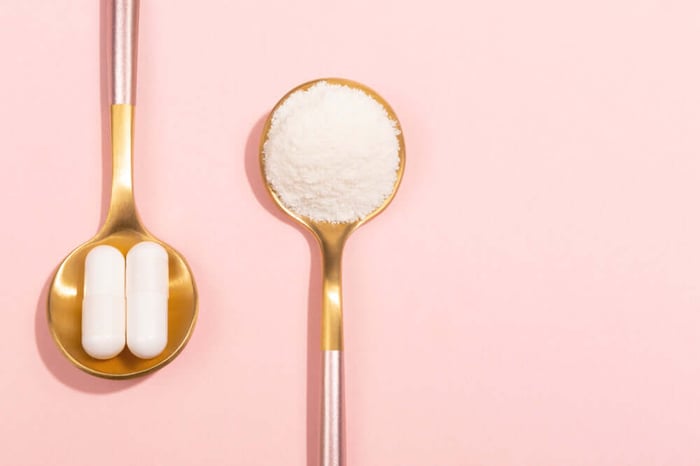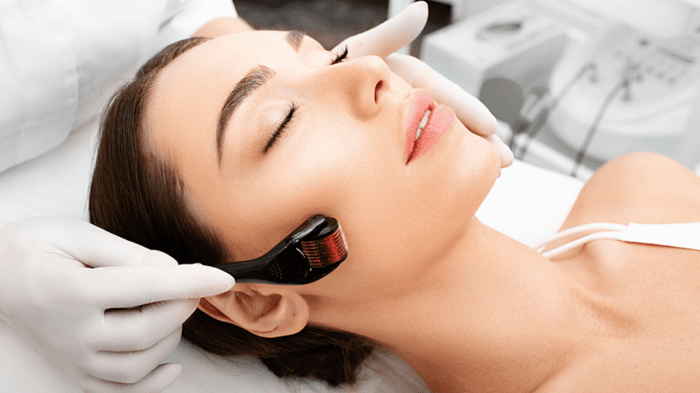Odds are good that you’ve heard about “fascia blasting,” the trendy new self-care technique that claims you’ll be looking and feeling younger after just a few sessions. Despite skepticism from some sources, sales of fascia blasting devices have skyrocketed over the past five years.
But why are millions of people blasting their fascia? What is it, what does it do, and--most importantly--does it work?
What is fascia?

Think of your fascia as a fibrous net that holds everything in your body together and in place. This connective tissue coats and tethers every muscle, bone, internal organ, and blood vessel, and plays an important role in keeping your skin looking youthful.
When your fascia is healthy and supple, it allows pain-free, limber movement and supports taut skin. As fascia breaks down or tightens up, it can restrict movement, cause pain, allow skin to sag, and cause other problems that radiate throughout your entire body.
Cellulite is also a likely fallout of deformed fascia: fascial breakdown leaves strands of connective tissue adhered to the skin, causing a dimpled or textured appearance.
Fascia is primarily made up of collagen, and as you age your body begins to break down collagen more quickly than it produces it--this process is accelerated after menopause. But poor fascia health can occur at any age. Cellulite, after all, affects 85% of women over the age of 21.
Whether and where you develop cellulite, and your overall fascial health, are heavily impacted by genetics. Other lifestyle elements also have an effect: chronic inactivity can cause the fascia to stiffen up and adhere tightly to organs, and (more rarely) overuse can also cause deformed fascia.
What does fascia blasting do?
In a nutshell, fascia blasting breaks down tightened or deformed fascia, stimulates the production of collagen, and encourages the growth of stronger, healthier fascia. Supporters say this can reduce cellulite and de-age skin, as well as improve range of motion, muscle recovery, and quality of life.
This happens for two reasons: blasting devices are designed to comb through and break up fascia and the pressure you place on a target area causes restorative blood flow to the tissues.
There are three steps to a typical blasting session, though many blasters end up customizing to meet their unique needs:
- Preparation: Heat the target areas prior to blasting with a hot shower, heating pad, or sauna session, then apply an oil or lotion to reduce friction between the device and the skin.
- Fascia blasting: Use a Fascia Blaster or similar device to massage and knead the fascia in your target areas. These devices are essentially rolling sticks with hard, knobby protrusions designed to really work into your skin and muscles. Massage for 3-5 minutes per area, applying a gentle but firm amount of pressure while “scrubbing” your skin with the device.
- Cooldown: This step allows the most customization. Stretch, take a cool shower, or lightly massage your target areas to gently keep your blood moving and reduce swelling.
Making certain lifestyle changes can improve and speed up the results from fascia blasting. Beyond the recommended 2-5 blasting sessions per week, it’s important that blasters drink plenty of water and take collagen supplements or eat collagen-rich foods, like bone broth, to support fascial regeneration.
Does it work?
That’s the multimillion-dollar question!
There is no shortage of enthusiastic testimonials and impressive before-after photos. These are the happy and vocal blasters who have driven fascia blasting’s incredible growth.
However, there are still many skeptics who aren’t so sure about blasting.
So what does the science say?
Ashley Black, the founder of Ashley Black Guru and the inventor of the Fascia Blaster, co-authored a study investigating the real effect of fascia blasting. In the study, 33 women used a fascia blaster 5 times per week for 12 weeks, while a control group of 10 women did not. By the end of the study, the blaster group saw a decrease in subcutaneous adipose tissue (fat under the skin) and an increase in procollagen, which is a sign that the body is building new collagen.
Other researchers haven’t found such strong results. A 2013 review of all studies on myofascial release therapy found that while there is evidence for the benefits of fascial manipulation, it is generally too weak to draw conclusions.
Although all evidence so far has been positive, a much larger, independent study of fascia blasting is necessary before we can be sure of its merit. Until then, we have plenty of testimonials and--if you decide to give it a try!--your own personal experience.
So should I give it a whirl?
Go for it! When starting out, blast for only a minute at a time in each area and apply only light pressure. This will help you ease into it and catch any adverse reactions that might happen. Potential side effects include bruising, worsened cellulite, or fatigue.
Interested in fascial manipulation but not ready to go full blast? There are many other, more mild ways to stretch and restore fascia. Try a self-massage, gentle stretching, or yoga--including face yoga.
Let us know your pro-fascia routine in the comments!







